The FTSE 250 contractor’s chief executive on fixing the firm, stepping down and why everyone, even bosses, appreciate a thank you. He talks to Dave Rogers
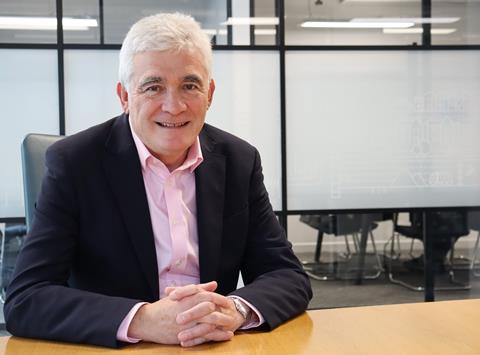
“Oh yeah, I’m bound to miss it.” Andrew Davies, the man who has been chief executive of Kier for the past six and a half years, is leaving later this month. Not to another job, no non-exec roles lined up. Nothing. Time for someone else to have a go, he says.
He officially leaves on 31 October. So, then, what is he going to do on 1 November? Handily, it’s a Saturday. He didn’t know until it’s pointed out to him. “In that case, ride my bike.”
Even chief executives have to go through the rigmarole of leaving a company, just like everyone else. “They’ll take my email off me, I’ll hand in my pass just like any other employee.” And that will be it. Slate wiped clean and then the new man, Stuart Togwell, currently in charge of the firm’s construction business, takes over.
“You don’t want to outstay your welcome. Stu’s a great guy,” Davies says.
He will miss it – especially after everything that he has achieved in fixing Kier – but he adds: “I’ve done my bit. I’ll miss the people, the site visits were great fun, people are so proud of what they do. Some bits were more interesting, some less interesting, but it’s a huge privilege being a CEO.”
Construction firms can unravel relatively quickly if they lose their supply chain or employees. You have to act very fast to secure their confidence
Davies turned 62 earlier this month and came into the construction industry 11 years ago when James Wates lured him from nearly three decades at BAE Systems to join Wates as chief executive. He spent four years there and, famously, was lined up to take charge of Carillion in 2018. He never got the chance because, before he joined, the firm imploded.
“What that company needed – as did Kier, and Kier got it – was that you have to act fast and build confidence in all the stakeholders,” he says.
“Construction firms can unravel relatively quickly if they lose their supply chain or employees. You have to act very fast to secure their confidence. They [Carillion] couldn’t move fast enough, couldn’t get me in in time to reestablish that confidence. Whereas Kier did.”
Davies says it was “fairly obvious” that Carillion was not going to make it before he was due to join which was meant to have been in April 2018.
It had appointed an interim boss, Keith Cochrane, after Richard Howson stepped down, in July 2017. “They kept on having unforeseen pieces of information [Howson’s departure was announced on the same day a trading statement revealed an £845m contract provision] and that’s where the confidence disappeared. They didn’t have a leader. An interim CEO is always difficult.”
Carillion is important in this story, not just because the firm never managed to get Davies in but, precisely because of that, it opened the door for Kier to do so instead.
He arrived in April 2019, a year or so on from Carillion’s collapse, and at the time he joined, the talk was that Kier was going to be the next Carillion. A lot rested on his shoulders.
He got to work straight away. “We had a very, very clear strategy and we had to act very, very fast such was the nature of the business we inherited.” This meant slashing jobs and getting rid of businesses.
When he arrived, the number of people who worked at Kier was, according to its 2019 annual report,18,778 – the year before it had topped 20,000. According to its 2025 annual report, the number has fallen to 10,361.
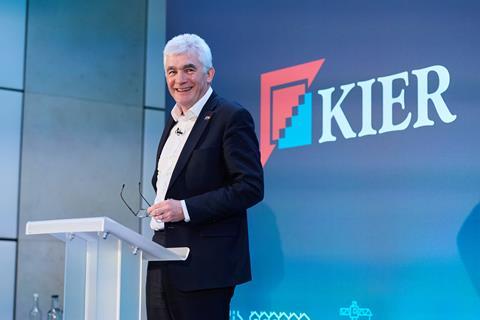
Jobs were cut and fast – more than 1,700 went in the first year of Davies’ stewardship – while non-core businesses were shut down, such as the international, waste and FM arms while back-office staff were transferred across to new employers as their functions were outsourced to others. “None of that was easy,” he says. “The question was not about silver bullets but how do I build confidence in a measured way?”
Kier’s spiritual home, Tempsford Hall, where it had been since 1967, was closed a year after he joined. “They were painful measures,” he admits. “Closing Tempsford for a company like Kier was emotional. I get it. But we had no choice, we had to deal with these issues.”
The “we” he refers to is the new management team he brought in to help right the ship. It included Togwell, who left Wates to join Davies in summer 2019, chief financial officer Simon Kesterton, who also arrived in 2019, and a new chairman, Matthew Lester, who arrived in 2020.
“Once you can demonstrate the savings you’re making, then you’re having a difference kind of conversation [with lenders]. They can see you’re serious, you’re taking your medicine, doing your self-help.”
>> See also: Man with a plan: How is Kier faring under Andrew Davies?
>> See also: The power of four: how UK’s biggest builders are working together on £1bn prisons programme
As a key government supplier, Davies was also in regular conversations with the Cabinet Office along with other stakeholders. “We had to tell the government we’re worth sticking with, you have to convince your supply chain that they’re going to get paid, then your employees that they’ve got career prospects, the capital markets that you’re worth investing in.”
Kier remains one of 36 key government suppliers across all industries and the biggest supplier to government in construction, covering everything from building schools and prisons to looking after roads and railways.
Davies says his discussions with the Cabinet Office homed in on one mantra: “I had to convince them that Kier really matters. Kier going [bust] would have been really serious because everything we do is in the UK.
“The government really wanted to sort this problem out, but government can only do so much, government doesn’t have all the levers. Their view was there was a market solution for Kier and they were right. That’s what exactly happened, we sorted our own problems out.”
He says the first two years of the turnaround were undoubtedly the hardest, compounded by the covid-19 pandemic which derailed the sale of its housing business which had been set to raise much-needed funds in 2020. Its key spring selling season was decimated by the impact of lockdown.
“It was a desperately difficult time,” Davies recalls. “We already had a strained balance sheet and that [lockdown] really put the pressure on.” Kier Living, as it was called, was eventually sold to private equity firm Terra Firma for £110m in June 2021.
Davies says the workforce which continued to work on sites during the first lockdown cannot be thanked enough. “It wasn’t pleasant going out in those times, people felt they shouldn’t be,” Davies remembers. “I’m eternally grateful they did. They saved the industry, no question about it.”
Slowly, but surely, Davies’s medicine began to work. “Any company can fail but Kier solved its own problems,” he says. At one point, at the end of its 2021 financial year, the firm’s debt had hit an eye-watering £582m, which included a chunk of money owed to the taxman.
Now the figure stands at £49m, with the number likely to turn cash positive by the time Togwell presides over his first set of results, its half-year figures due out next spring.
The turnaround has been quite something. Kier has been readmitted to the top 250 FTSE companies, begun paying dividends again – after five years of being unable to do so – and increased its order book to a record £11bn. “The balance sheet has been transformed,” says Davies.
While he will be best known for his work at Kier, Davies remembers his time at Wates with affection.
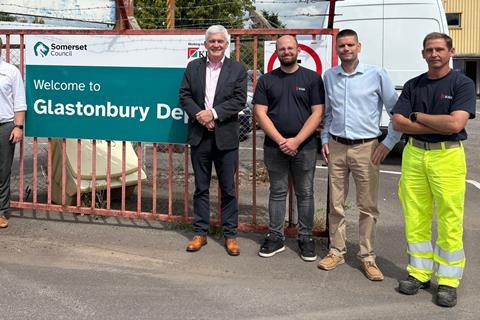
He had been at BAE for 28 years, running the maritime division of the defence giant which, among other things, meant overseeing its work building nuclear submarines for the Royal Navy.
Construction came to me in many ways, it was a happy set of coincidences. It’s a great industry, a can-do industry. You’re bound to miss that a little bit
“You couldn’t wish for a better job, but you get to a stage in your career where you think, ‘is this going to be the rest of my career or am I going to do something else?’ I always felt I was going to do something else.”
Wates had got in touch, looking for a replacement for Paul Dreschler who was leaving after a decade in charge and who, like Davies, was an industry outsider having spent 24 years with chemicals firm ICI.
Davies says he had heard of Wates but did not know an awful lot about them. “James [Wates] was the reason I joined. An inspiring figure, really good bloke.”
He adds: “Construction came to me in many ways, it was a happy set of coincidences. It’s a great industry, a can-do industry. You’re bound to miss that a little bit.”
After the Carillion gig came to nothing, he spent much of 2018 walking long-distance footpaths. But Kier had been in touch and it was in March 2019 that the firm announced that he would be joining them the following month. “I knew they were strong, I knew the strength of their offering, their geographic spread.”
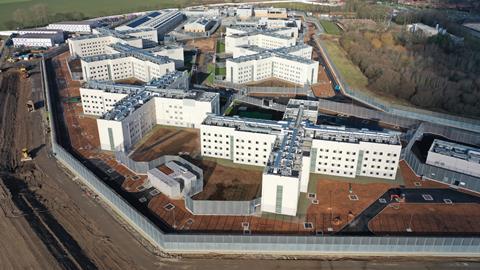
Davies took the helm and announced a review of the business on day one. He shared its findings that June, four weeks earlier than he had initially said he would.
He winces when he is told a familiar contracting refrain: if a contractor has 10 jobs, three or four will go well, maybe one will go really well, a few will be so-so, some will go really badly.
“Those 10 jobs we’ll do because we can see a way to make an appropriate margin, manage the client’s risk and deliver a quality project. And, if we can’t, we won’t do it. There are plenty of examples where we’ve said no.”
I cannot claim to understand all our 400 projects, but I bet you I can reach people who do
He says some of the prisons jobs for the Ministry of Justice have been the most satisfying of his time at Kier. “[HMP] Millsike [near York] was a fantastic example of MMC in action. Delivered, done.”
He mentions another job to pump out water of an old coal mine near Rotherham in South Yorkshire to make sure the polluted water does not seep into local rivers. “We’re putting in a series of tanks to take out the heavy metals. Mind-blowing stuff.”
Davies has been to dozens of Kier sites during his time at the top. “I don’t think you’re in charge of 10,000 people – you’re setting the parameters where 10,000 people can give of their best. You have to be focused on the detail. I cannot claim to understand all our 400 projects, but I bet you I can reach people who do.”
He finishes with a story which shows that chief executives are human too. The boss of a water company – he won’t say who – rang him up one morning at 8am. His name popped up on his mobile and he immediately feared the worst. “I think, ‘oh no, what’s happened? What am I going to have to spend the rest of the day sorting out?’
“Anyway, he said he just wanted to say how pleased he was with our team and in particular the performance of so-and-so, and he gave me the names of three people. You do occasionally get these calls, you do get others which aren’t so complimentary. A little bit of praise and a thank-you goes an awful long way, even with CEOs.”
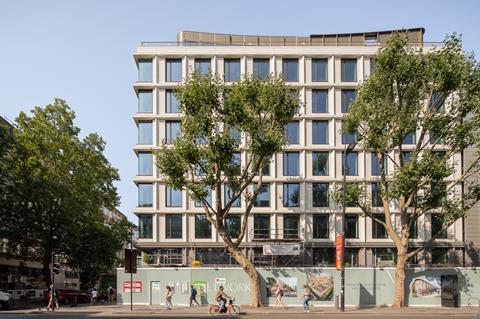
Then and now: the numbers of Andrew Davies’ first and last Kier annual reports
| Year | 2019 | 2025 |
|---|---|---|
| Turnover | £4.5bn | £4.1bn |
| Operating profit (loss) | (£216.7m) | £113.7m |
| Pre-tax profit (loss) | (£245m) | £78m |
| Average month-end net debt | £422m | £49m |
| Order book | £9.4bn | £11bn |
| Number of employees | 18,778 | 10,361 |
Source: Kier annual report


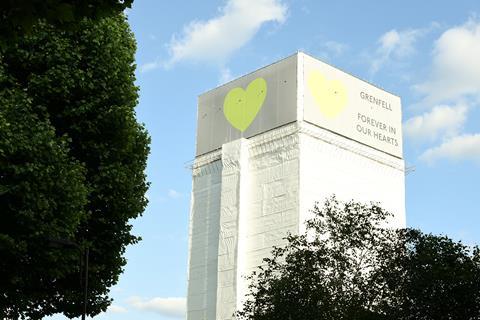


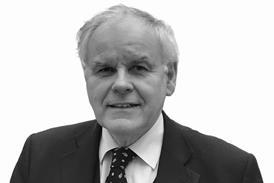
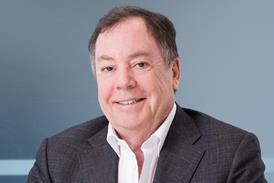










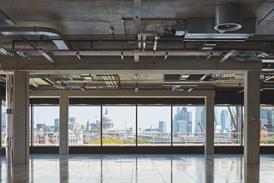

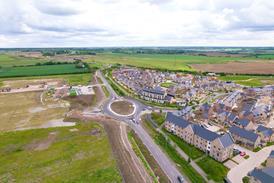







No comments yet